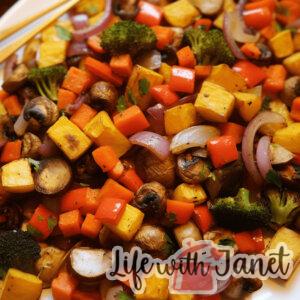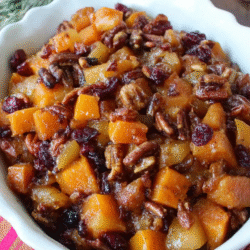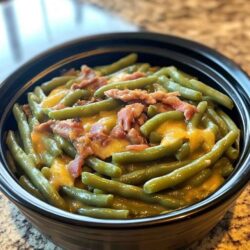WANT TO SAVE THIS RECIPE?
When roasting, certain vegetables are favored for their rich flavors and textures. Popular options include broccoli, cauliflower, baby carrots, red bell pepper, onions, and mushrooms, as mentioned in the original recipe. The beauty of roasting lies in the vegetables’ natural sugars, which caramelize and offer a delightful depth of flavor.
Other vegetables that roast well include asparagus, brussels sprouts (halved), quartered red onions, and sliced zucchini. The rule of thumb is that any vegetable that can cook thoroughly within 15 to 20 minutes at 425˚F is a prime candidate for roasting.
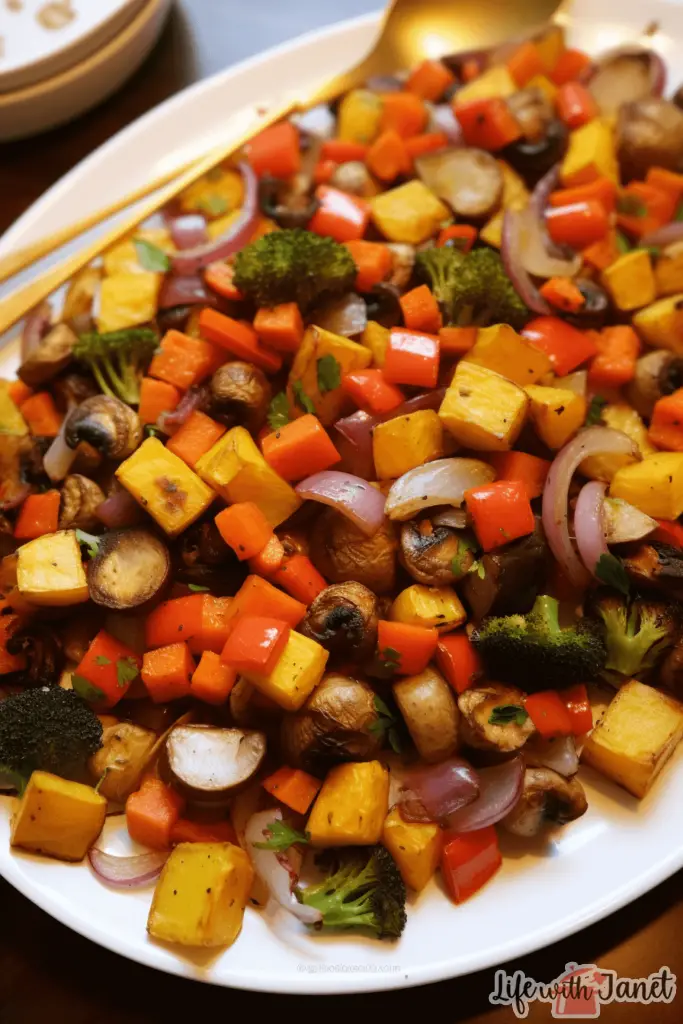
Furthermore, when choosing veggies for roasting, it’s essential to consider their water content. Veggies with lower moisture levels tend to roast better, leading to crispier outcomes. However, mixing moisture-rich vegetables with those that are drier can balance the overall texture.
If you’re ever in doubt, a quick stroll through a Farmer’s Market can inspire a colorful and flavorful combination for your next roasted vegetable dish.
The Secret to Evenly Cooked Veggies
Roasting vegetables seems straightforward, but ensuring they cook evenly is an art in itself. Starting with vegetables of similar sizes is essential. For instance, if you’re using carrots and broccoli, cutting them into similar-sized pieces will promote even cooking.
Another key factor is the spacing of vegetables on the sheet pan. Overlapping is discouraged because it can lead to steaming rather than roasting. Remember, a single layer is crucial for that delicious roasted finish.
To maintain evenness, it’s also recommended to stir or turn the vegetables halfway through the cooking process. This ensures that all sides get an even amount of heat exposure.
Temperature plays a pivotal role too. The optimal roasting temperature for most vegetables is around 425˚F. However, always ensure that your oven is properly calibrated to avoid hot spots which could cause uneven roasting.
Lastly, understanding the individual cooking times of different vegetables is crucial. While some veggies might be perfect at 20 minutes, others might need a bit more or less time. Regularly checking on them and using a fork or knife to test their tenderness can be a game-changer.
The Perils of Overlapping: Understanding Vegetable Roasting Dynamics
Roasting is a method of cooking that envelops food in hot air, leading to caramelization of the outer layer and tenderizing the inside. For this process to be effective, air circulation is paramount. Overlapping vegetables hinder this circulation.
When vegetables overlap, they create a barrier that traps steam. Instead of the desired roasting effect, the veggies steam in their juices. This doesn’t just alter the cooking method; it changes the final flavor and texture of the veggies, making them soft and potentially soggy.
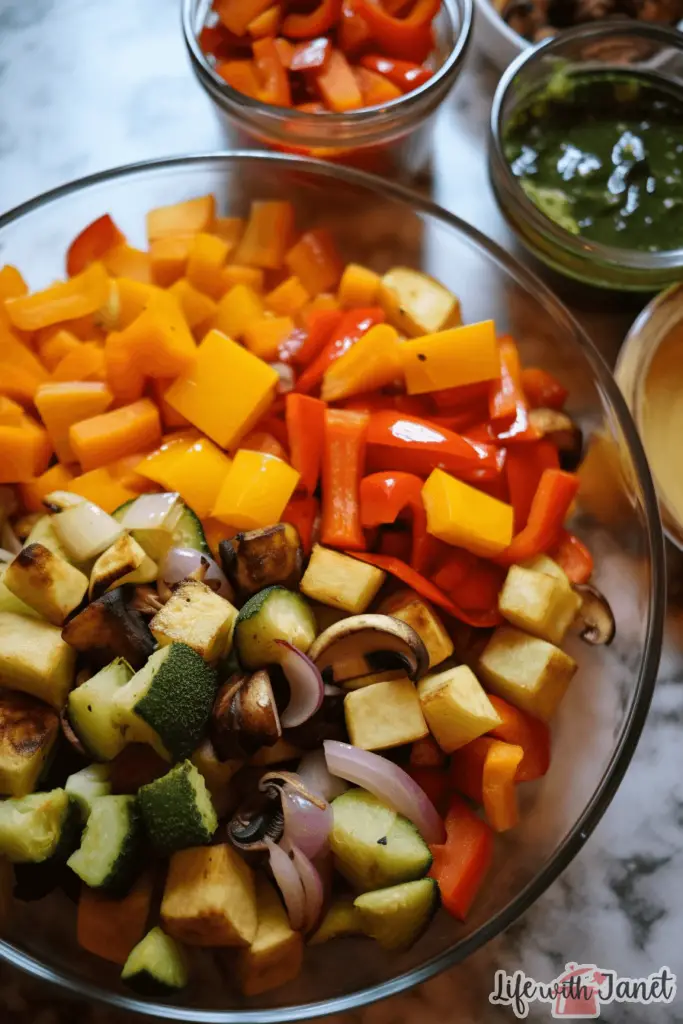
If you’ve invested in a plethora of fresh vegetables, perhaps after an enthusiastic trip to the Farmer’s Market, ensuring they roast rather than steam is essential for the perfect texture. A similar technique is employed while roasting potatoes, where even spacing results in a crisp exterior and fluffy interior.
Remember, the goal is a crisp-tender vegetable with a slightly caramelized exterior. Overlapping can rob your veggies of this delight. If necessary, it’s better to use multiple sheet pans or roast in batches than to overcrowd a single pan.
Seasonings: The Magic Behind Flavorful Roasted Vegetables
While vegetables have their inherent flavors, the right seasonings elevate the dish to another level. From the classic combination of olive oil, salt, and pepper to more exotic blends, the possibilities are vast.
In the basic recipe, garlic powder and Italian Seasoning are sprinkled over the veggies. This combo gives a hint of aromatic garlic and a bouquet of Italian herbs, providing both depth and character to the dish.
However, one shouldn’t be limited to these seasonings. Other popular options include rosemary, thyme, paprika, or cumin. The spices can be adjusted based on the cuisine you’re targeting. For instance, adding curry powder or turmeric can give a hint of Indian flavors.
For those seeking a cheesy delight, adding parmesan cheese can create a golden and flavorful crust on the veggies. This idea is inspired by dishes like parmesan roasted squash, where cheese plays a central role in the flavor profile.
Ultimately, the choice of seasonings boils down to personal preference. It’s an opportunity to experiment and discover what works best for your palate.
Preserving the Delight: Storing and Reheating Roasted Veggies
Roasted vegetables are a treat, and it’s often tempting to prepare them in large batches for future meals. However, storing and reheating them without compromising their texture and flavor can be a challenge.
For storing, always ensure the veggies have cooled completely before transferring them to an airtight container. This prevents additional steaming within the container, which can make them soggy. Once sealed, they can be stored in the refrigerator for up to four days.
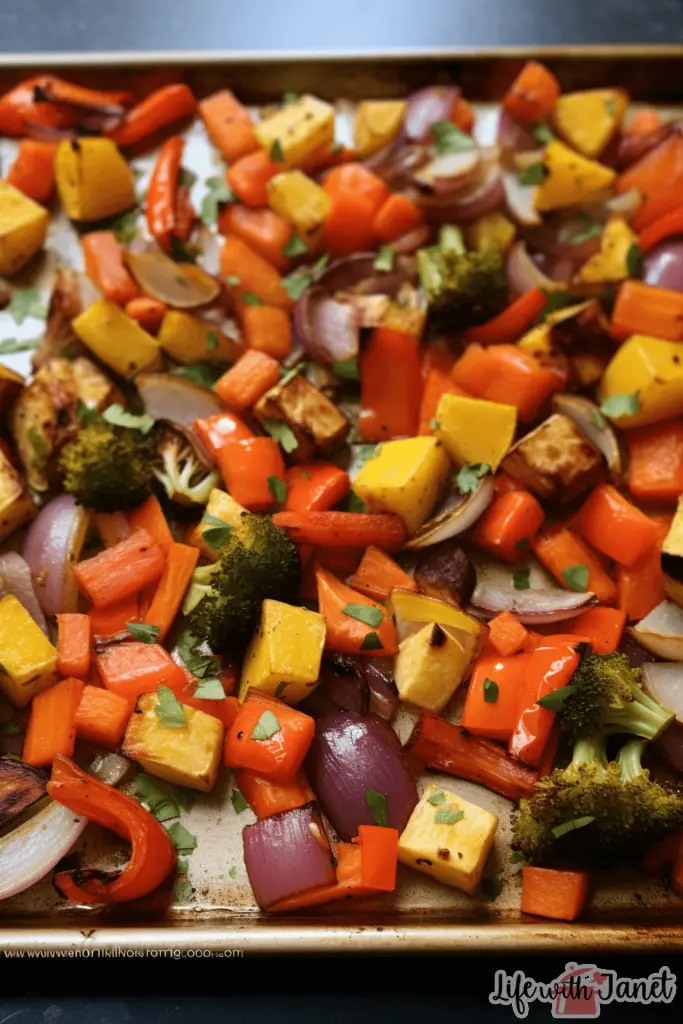
When it’s time to reheat, avoid the microwave, as it can make the vegetables soft and unappetizing. Instead, opt for a preheated oven at 450˚F. Place the veggies on a sheet pan in a single layer and reheat for around five minutes. This method will help maintain their crisp-tender texture.
For added freshness upon serving, consider garnishing with fresh chopped parsley or any other herb of your choice. With these storage and reheating tips, you can enjoy your roasted veggies just as much the second time around.
Oven-Roasted Vegetable
Ingredients
- 2 cups broccoli florets
- 2 cups cauliflower florets
- 2 cups baby portobello mushrooms sliced
- 1 cup baby carrots thinly sliced
- 1 red bell pepper diced
- 1 small yellow onion segmented into 6 parts
- 2 tablespoons of olive oil
- Salt and freshly ground pepper adjust to taste
- 1½ teaspoons of Italian Seasoning
- ½ teaspoon of garlic powder
- Optional: Grated parmesan and fresh parsley for garnishing
Instructions
- Preheat your oven to 425˚F.
- Prepare a large baking tray by lining it with foil or parchment paper.
- Spread out all the vegetables evenly on the tray.
- Drizzle olive oil over the vegetables and mix well, ensuring they’re coated.
- Sprinkle salt, pepper, Italian Seasoning, and garlic powder over the vegetables. Toss gently to ensure even seasoning.
- Spread the vegetables in an even layer to promote uniform roasting.
- Roast for about 15-20 minutes. For best results, give them a stir halfway.
- The vegetables are done when they are soft, with a light golden hue.
- Once out of the oven, sprinkle with optional parmesan and parsley. Enjoy!
Notes
- To ensure even roasting, avoid overlapping the vegetables.
- Ideally, use a pan that measures around 12 in. x 16 in.
- Feel free to customize with your choice of seasonings and adjust to your liking.

